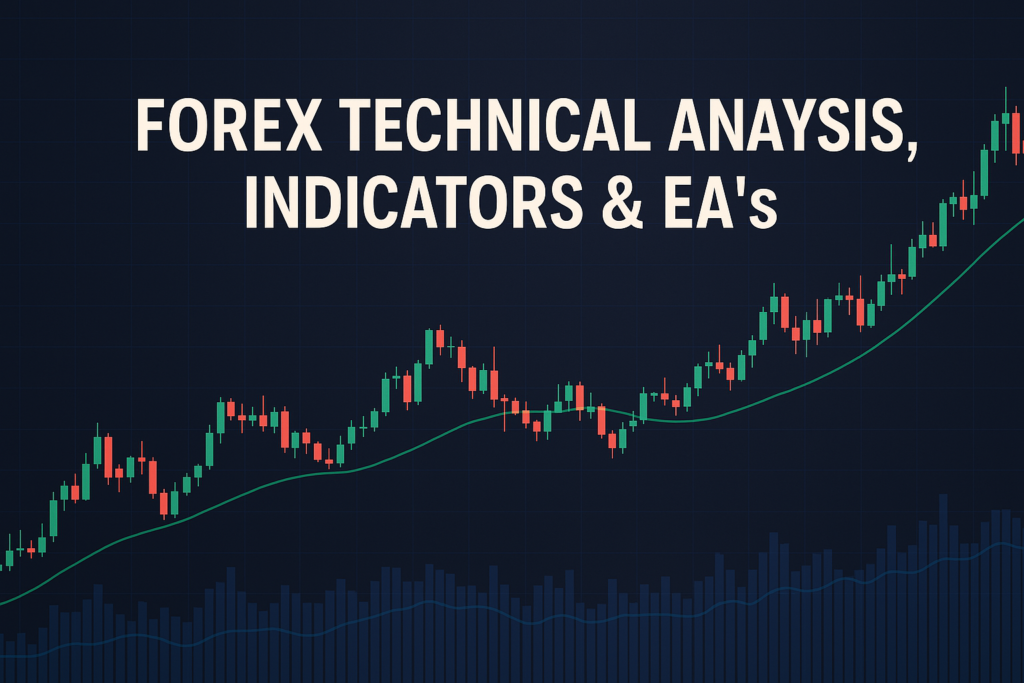
The MACD Moving Average Convergence Divergence is a key indicator for Forex trading, helping traders identify trends and make informed decisions.
Have you ever heard of the MACD Moving Average Convergence Divergence? It’s a popular tool among Forex traders. The MACD helps traders make sense of price movements in the market. By using this indicator, traders can spot trends and potential reversals. This can ultimately lead to smarter trading decisions.
However, understanding the MACD isn’t always easy. Many traders, both beginners and professionals, struggle with it. They might find it confusing or misinterpret its signals. Without a solid understanding of the MACD, traders can miss out on valuable opportunities. Learning how to use it effectively is crucial for anyone wanting to succeed in Forex trading.
This article will explain the MACD Moving Average Convergence Divergence, how it works, its history, and its advantages and disadvantages. We will also guide you on applying it to trading platforms like MT4 and MT5 and share various strategies to enhance your trading.
For instance, let’s look at the USDCHF analysis May 15, 2025. This analysis showcases how the MACD can be applied to real-world trading situations.
What is a MACD Moving Average Convergence Divergence?
The MACD Moving Average Convergence Divergence is a trend-following momentum indicator. It shows the relationship between two moving averages of a security’s price. Think of it as a tool that helps you see when a trend is starting or ending. The MACD consists of two lines—the MACD line and the signal line. When they cross, it can indicate a buying or selling opportunity.
Types of MACD Moving Average Convergence Divergence
There are several types of moving averages used in the MACD calculation. The most common types include:
- Simple Moving Average (SMA): This averages the price over a specific period.
- Exponential Moving Average (EMA): This gives more weight to recent prices, making it more responsive.
- Weighted Moving Average (WMA): This gives different weights to prices based on their age.
Each type has its unique characteristics and can be used based on a trader’s preference and strategy.
How MACD Moving Average Convergence Divergence Smooths Out Price Action
The MACD helps smooth out price action by reducing noise. In Forex trading, price can be very volatile, making it hard to see trends. The MACD uses moving averages to filter out this noise, giving traders a clearer view. This smoothing allows traders to focus on the overall direction of the market rather than getting caught up in short-term price fluctuations.
Common Periods Used and Why
Traders often use specific periods when calculating the MACD. Common periods are 12, 26, and 9. The 12 and 26 are used for the MACD line, while the 9 is for the signal line. These periods were chosen because they provide a balance between responsiveness and reliability. Shorter periods can react quickly to price changes, while longer periods give a more stable view.
The History of MACD Moving Average Convergence Divergence: How It Became Popular
Origin of MACD Moving Average Convergence Divergence
The MACD was developed by Gerald Appel in the late 1970s. He created it to help traders identify price trends effectively. The MACD has since become one of the most popular indicators in Forex trading.
When Did Traders Start Using It Widely?
Traders began using the MACD widely in the 1980s. Its effectiveness in spotting trends and reversals made it a favorite among traders. As technology improved, it became easier to calculate and use, further increasing its popularity.
Real-Life Stories
Many professional traders have made fortunes using the MACD. One famous story is about a trader who used the MACD to identify a major market reversal. By entering the market at the right time, he turned a small investment into a significant profit. This shows how powerful the MACD can be when used correctly.
Advantages and Disadvantages of MACD Moving Average Convergence Divergence
Advantages:
The MACD offers several advantages:
- Helps Identify Trends Easily: The MACD makes it simple to see if a market is trending.
- Useful for Dynamic Support and Resistance: The MACD can highlight potential support and resistance levels.
- Works Well for Crossover Strategies: The crossing of the MACD and signal line can indicate strong buy or sell signals.
Disadvantages:
Despite its advantages, the MACD has drawbacks:
- lags Behind Price Movements: The MACD can be slow to react to sudden market changes, which might lead to missed opportunities.
- Can Give False Signals in Sideways Markets: In a ranging market, the MACD may generate false signals, leading to poor trades.
How to Apply MACD Moving Average Convergence Divergence on MT4 & MT5
Step-by-Step Guide to Adding MACD Moving Average Convergence Divergence on Charts
To add the MACD to your charts on MT4 or MT5, follow these steps:
- Open your trading platform.
- Select the chart you want to analyze.
- Go to the “Insert” menu.
- Select “Indicators,” then “Trend,” and click on “MACD.”
Customizing MACD Moving Average Convergence Divergence Settings
You can customize the MACD settings to fit your trading style. Adjust the periods, colors, and types of moving averages. This personalization can help you see the signals that matter most to you.
Saving Templates for Easy Application
Save your customized MACD settings as a template. This way, you can easily apply the same setup to other charts without having to redo the settings each time.
5 to 7 Trading Strategies Using Only MACD Moving Average Convergence Divergence
All Time Frame Strategy (M5 to D1)
This strategy can be applied across various time frames. It works by looking for MACD crossovers. When the MACD line crosses above the signal line, consider it a buy signal. When it crosses below, it’s a sell signal. For example, if you’re on the H1 chart and see a crossover, you can enter a trade immediately.
Trending Strategies
In trending markets, use the MACD to confirm the trend’s strength. If the MACD is above zero, look for buy signals. If it’s below zero, focus on sell signals. For instance, if the price is rising and the MACD is above zero, it may indicate a strong uptrend.
Counter Trade Strategies
This strategy involves trading against the trend. Wait for the MACD to show signs of divergence from the price. For example, if the price is making new highs but the MACD is falling, it may indicate a potential reversal. This can be a good opportunity to sell.
Swing Trades Strategies
For swing trading, look for MACD crossovers at key support and resistance levels. If the price approaches a resistance level and the MACD signals a crossover, consider it a sell opportunity. An example would be selling when the MACD crosses below the signal line at resistance.
5 to 7 Trading Strategies Combining MACD Moving Average Convergence Divergence with Other Indicators
All Time Frame Strategy (M5 to D1) with RSI
Combine the MACD with the Relative Strength Index (RSI) for better signals. For example, if the MACD signals a buy and the RSI is below 30 (indicating oversold), it can be a strong buy signal. This combination helps confirm the strength of the signal.
Trending Strategies with Moving Averages
Use the MACD alongside moving averages for trend confirmation. If the price is above the 50-period moving average and the MACD crosses above the signal line, consider it a strong buy signal. For example, if the MACD confirms the trend, it adds confidence to your trade.
Counter Trade Strategies with Bollinger Bands
Combine the MACD with Bollinger Bands for counter-trends. When the price touches the upper band and the MACD shows divergence, it may be a good time to sell. This strategy helps identify potential reversals against the trend.
Swing Trades Strategies with MACD and Stochastic
Use the MACD with the Stochastic oscillator to find swing trade opportunities. If the MACD crosses below the signal line and the Stochastic is above 80 (indicating overbought), it could be a sell signal. This helps confirm potential reversals in swing trading.
For more information about trading issues and solutions, check out our article on Spread values getting cut off.
Top 10 FAQs About MACD Moving Average Convergence Divergence
1. What does MACD stand for?
MACD stands for Moving Average Convergence Divergence. It is a popular technical indicator used in trading to identify trends and reversals.
2. How do I interpret MACD signals?
When the MACD line crosses above the signal line, it’s usually a buy signal. Conversely, when it crosses below, it’s a sell signal.
3. Can MACD be used in any market?
Yes, the MACD can be used in Forex, stocks, and commodities. It is versatile and works well across different markets.
4. Is MACD a leading or lagging indicator?
The MACD is considered a lagging indicator. It follows price movements and may not predict future price changes accurately.
5. What time frames work best with MACD?
MACD can be used in any time frame. Many traders like to use it on longer time frames like H1 or H4 for more reliable signals.
6. Can I use MACD alone for trading?
While many traders use MACD alone, combining it with other indicators can enhance your trading strategy and signal accuracy.
7. What are the common settings for MACD?
The most common settings for MACD are 12, 26, and 9. These settings provide a good balance of responsiveness and reliability.
8. How do I avoid false signals with MACD?
To minimize false signals, combine MACD with other indicators or wait for confirmation from price action before entering a trade.
9. Can I use MACD for day trading?
Yes, many day traders use MACD to make quick trading decisions based on short-term price movements.
10. Where can I learn more about MACD?
There are many online resources, tutorials, and courses available for learning about MACD and how to apply it in trading.
Conclusion
In conclusion, the MACD Moving Average Convergence Divergence is a powerful tool for Forex traders. It helps identify trends, supports decision-making, and can enhance trading strategies. Understanding how to use the MACD effectively can provide a significant advantage in the market.
As a final piece of advice, always test your strategies in a demo account before trading with real money. This way, you can gain confidence and experience without risking your capital.
Remember, the MACD Moving Average Convergence Divergence can be an essential part of your trading toolkit. Learn, practice, and enjoy the journey of becoming a successful trader!
Get a broader view of this strategy with help from top sources FXStreet, Trading Point (XM)
Expand Your Knowledge
- 📌 Forex Trading Learning Road Map
- 📌 Forex Trading Course with no Fees
- 📌 Forex Trading Issues, Problems, and Solutions
- 📌 Forex Daily Forecast & Live Updates
- 📌 Forex Fundamental & News Analysis: Tomorrow’s Market Movers & Trade Opportunities
- 📌 Forex Education Hub: Learn & Profit
- 📌 Forex Technical Analysis, Indicators & EA’s
Start Trading Today
Ready to take your forex trading to the next level? Open an account with Exness, one of the most trusted platforms in the industry. 👉 Sign Up Now and trade with confidence!
My recommended broker stands out with ultra-low spreads for beginners, instant withdrawals, and zero spread accounts for pro traders.
Trusted since 2008, lightning-fast execution, no hidden fees, and a secure, transparent trading environment—giving you the edge you need to succeed. 🚀
YouTube Video Library: Related Videos
Note: The video above is embedded from YouTube and is the property of its original creator. We do not own or take responsibility for the content or opinions expressed in the video.



